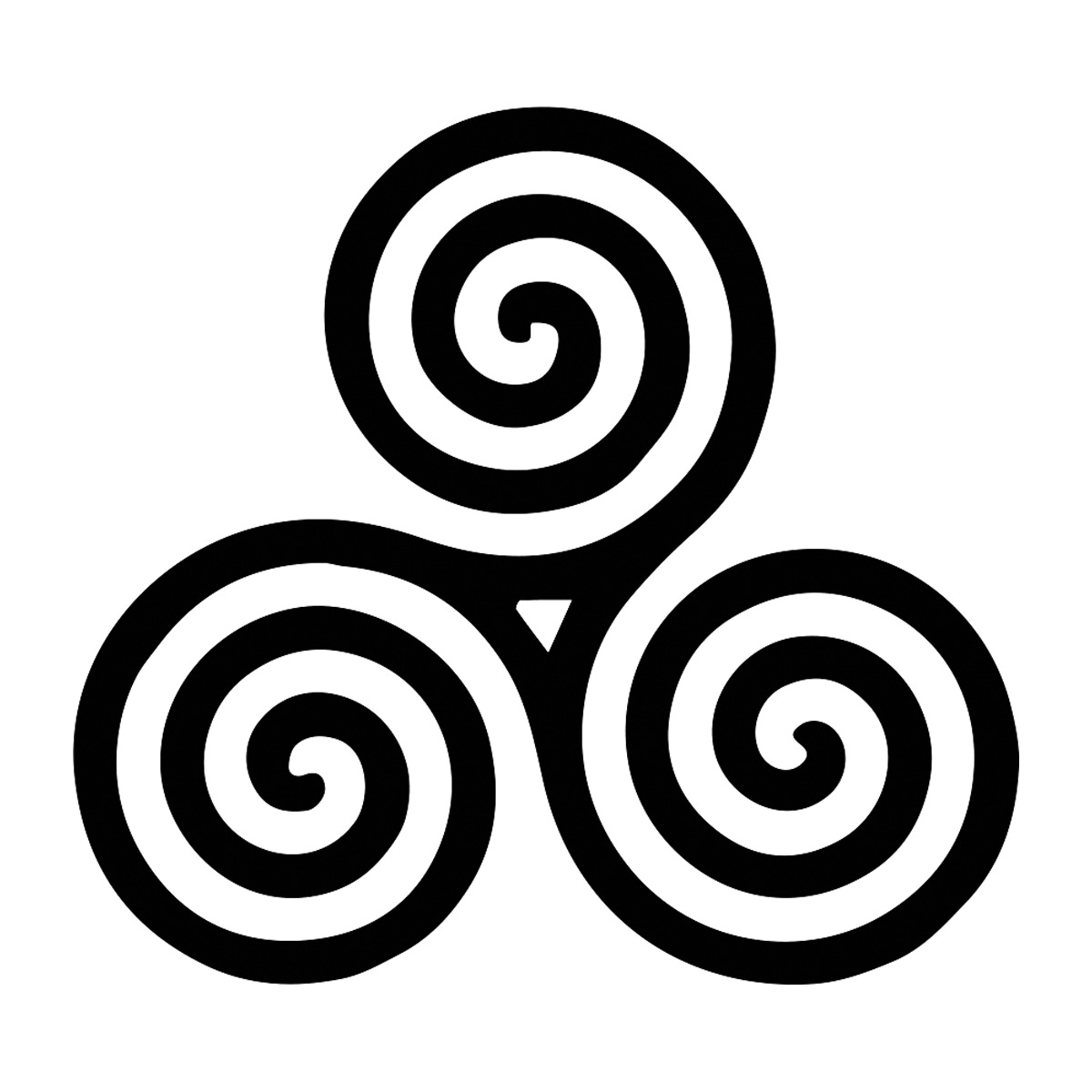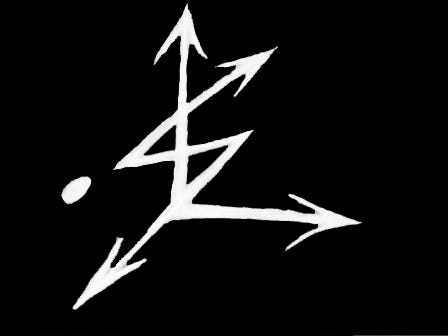The Morrigan in Discordianism: A Dissection of Personal Gnosis
A personal occult revelation that shredded my sanity.
Writer’s foreword: This article originally premiered on Hiero as my contribution to the topic of Chaos Magic for the Host shift I had assigned myself, where my role is to create content and provoke thoughtful discourse in our new and budding alternative spiritual community. In true ADHD fashion, I had the basic premises of the article swirling around in my head for some time but put off the actual writing until the day and night before my shift, thinking that surely if I had my points already laid out in my mind, the task of writing the actual article should be a breeze.
Fool! That day was spent frantically tearing through as many resources as I could find—some which I had read before, but many new—on the Morrigan, Greek and Irish mythology, and contemporary Discordianism and Chaos Magic. My brain was put into overdrive as I sifted through the available information, picking up more links and threads of connection along the way. Not included in the final product were at least half a dozen points of connecting that might’ve been too tenuous to the reader, or forced me to go further down the rabbithole on what I’ve identified as the American Irish Celtic Pagan Current—which I may still elaborate upon in a later article. Once again, I nearly lost perspective on what was real and what was confirmation bias, and it felt like something beyond me had reached into my head and stirred around the contents even as I was scrambling to put them in order.
The publishing of the article felt like giving birth, putting something strange and eldritch into the world, and laid in a feeling of cloudiness and brain fog for nearly 3 days after the fact. I feel like this article gives a real glimpse into the energy currents that have consumed my life for the past 2 years, and, in the writing of it, nearly threatened to do it again—surfing the waves of synchronicites within the Discordian shifting of paradigms and finding that, instead, the paradigms threatened to shift me.
I've decided to delve deeply into a key component of my UPG (Unverified Personal Gnosis) which I have never before attempted to share with others aside from a few close friends (namely, in my private Discord server). I have believed since the start of my journey into alternative spirituality and witchcraft that it was my patron goddess, the Morrigan, who led me into the discovery of chaos magic and that She has personally had a hand in its historical rise in contemporary consciousness. Indeed, it is my belief that the currents of Chaos Magic and the American Irish Celtic Pagan current are inextricably linked. Today I seek to argue this case to the uninitiated.
The first argument that the Irish Celtic goddess known as the Morrigan and the Greek goddess of discord and patroness of Discordianism, Eris, have a relationship to one another, comes from an examination of their spheres—or the areas of human experience with which they are associated. The Morrigan's spheres include battle, sovereignty, land, and prophecy, which upon its face, seem quite divorced from the Discordian principles of chaos. If sovereignty is an organizing force, then it seems it should be at odds with chaos and discord. However, when we look at the Greek mythology surrounding the goddess Eris, it becomes clear her original associations arose out of battle:
But the clamour of the Trojan ranks was as that of many thousand ewes that stand waiting to be milked in the yards of some rich flockmaster, and bleat incessantly in answer to the bleating of their lambs; for they had not one speech nor language, but their tongues were diverse, and they came from many different places. These were inspired of Mars, but the others by Minerva—and with them came Panic, Rout, and Strife whose fury never tires, sister and friend of murderous Mars, who, from being at first but low in stature, grows till she uprears her head to heaven, though her feet are still on earth. She it was that went about among them and flung down discord to the waxing of sorrow with even hand between them.
—Homer, pg. 90
It is worth noting that the translation of one of the aspects of the Morrigan—who is, according to many mythological analyses, perhaps not a singular goddess but a multiplicity of goddesses, or perhaps a title—Babd, translates to battle-fury.
Furthermore, the offspring of Eris are cited in Theogeny as a multitude of problems which plague humanity, which include:
Then loathsome Strife bore Ponos, the bringer of pains,
Oblivion and Famine and the tearful
Sorrows,
the Clashes and the Battles and the Manslaughters,
the Quarrels and the Lies and
Argument and Counter-Argument,
Lawlessness and Ruin
whose ways are all alike,
and Oath,
who, more than any other, brings pains on mortals
who of their own accord swear false oaths.
Another item of note is that during the Morrigan's final dealings with the boy-hero of Irish myth Cuchulainn, She punishes him for breaking his geas against eating dog meat (or forces him to break it based on the geas of hospitality which prohibits him from refusing food that is offered to him—depending on what version of the myth is being read, and the reader's interpretation.) A geas in Irish mythology and folklore is not best directly translated as an "oath" but rather a magical compulsion to fulfill certain requirements, or a taboo against performing certain actions. However, a geas carries the same implications of divine punishment upon being broken as an oath, and shares the implications of being looked upon as unfavourable by the gods.
There’s a theme in both the myths of Eris and the Morrigan are that war, battle or strife cause the breaking of promises in a manner that will be punished by the gods.
Another parallel that can be drawn between the Morrigan and Eris is that both exact divine retribution after being "snubbed." In fact, the story in which Eris is insulted by not receiving an invitation to a feast with the other gods on Mount Olympus is referred to by Discordians as "the Original Snub." In the Ulster Cycle myth, the Morrigan appears to Cuchulainn wearing a "dress of many colours" in an implied attempt to seduce him, and when Cuchulainn snubs her advances, she vows to exact her revenge in an infamous exchange of prophesied threats. These two myths both suggest prideful goddesses who do not appreciate having their company spurned, and who will exact divine retribution in retaliation for insults.
Now we shall explore the links between the two goddesses within the contemporary occult movements of Chaos Magic and Discordianism. The DKMU was a Discordian/Chaos Magic organization established with the explicit purpose of disrupting "consensus reality" by means of the use of the Linking Sigil, a stylized sigil of the letters "L" and "S" overlaid, said to function as a remote node which connects to every other LS via a network of magical energy, which can be used to: Charge spells, fuel magical intent, revitalize locations that had previously gone magically dead due to lack of belief, and funnel energy from highly trafficked locations back into the magical network. This specialized sigil was said to be guarded by an egregore or godform by the name of "Ellis", described as a red-haired woman with symbolic resonance to Lewis Carroll's "Alice in Wonderland." Ellis's function within the DKMU pantheon is both as guardian of the magical network created by the LS and as the "way-opener" to experiences with the rest of the DKMU godforms, bearing resemblance to the role of Ganesh within the Hindu pantheon, or Papa Legba within Voudon. Her epithet is "the Connection."
Ellis's role is described in the DKMU .pdf on its godforms as follows:
For instance, if we are to describe the chronological appearance of such entities in terms of their archetypes, then Ellis would serve as the foremost connection to the current or occult path, as she has indeed, in the past, served as such for others. In this sense, she is both the white rabbit (starting point) and Red Queen (ending point) within the wonderland of occult lesson and ability.
The connection between Ellis and Lewis Carroll's Alice in Wonderland is explicitly stated; Ellis encompasses the entire cycle from naive seeker (Alice) to proud sovereign (the Red Queen.) Ther symbolic resonance of Carroll's Red Queen echoes the Morrigan in Irish mythology. There is the obvious sovereignty aspect, which is examplified in Her name itself; Mor Rhiogan translating into "Phantom Queen" or "Nightmare Queen." There are also strong associations between the Morrigan and the colour red, which is multifold: One of Macha's epithets being "the red-haired", and the colour of blood itself as it appears on the battlefield. She also shapeshifts into a red heifer in one of the myths, and wears a red dress the first time She meets Cuchulainn.
Referring once again to the DKMU pamphlet on godforms:
Appears in Dreams or Visions as: A red haired young or older Caucasian woman, usually dressed in reds, blacks or dark greens, her demeanor usually depicting a Victorian Era etiquette, usually comforting, challenging or revealing something to the practitioner. There are a number of stories relating to the unpredictability of Ellis within a magickal context; broken bones seem to be popular.
The Morrigan's associations with shapeshifting and witchcraft are well-known to those who study Irish mythology. Additionally, the number 3 was exceptionally sacred to the Irish Celts, and so too Ellis seems to share this numerical association:
Number Attributions: 5 (as points on the sigil), 333, or 3:00 AM (the witching hour), and 8 (as legs on the spider)
Furthermore, there is the Red Queen's distinctive catchphrase in Alice in Wonderland as she temperamentally orders the execution of any who have offended her, "Off with their heads!" In Ireland the heads of slain men that littered the battlefield was called "the mast of Macha" or "Macha's crop" - Macha, of course, being one of the aspects of the multiplicity of goddesses known as the Morrigan.
So, in conclusion, what is the link between the Morrigan and Eris exactly? It is impossible to say with the available information, as I cannot claim to know the mind of divinity. Perhaps these two are long lost distant sisters or relatives, or simply two goddesses who have grown sympathetic to each other's causes and decided to team up to disrupt consensus reality. As my first attempt at presenting this UPG to the public, I still find myself with more questions than answers when it comes to these two goddesses who, in their original mythology, both seem to represent aspects of the dark and unpredictable disharmony that arises from human conflict. I can only speculate that perhaps these two goddesses have returned and manifested themselves within a contemporary occult movement because the threat of darkness representing itself in the form of materialist consensus reality and the military-industrial complex is an even greater threat than humanity has ever seen before, one which we require magical divine allyship in order to combat.
Sources
The DKMU Godforms: An Excerpt from Liber Sigillum, Frater E.S. & the A.A.O in collaboration with theDKMU. https://www.dkmu.org/text/A-A-O-The-DKMU-Godforms-Liber-Sigillum-Excerpt.pdf
The Iliad, Homer. pg. 90
Macha. Jones' Celtic Encyclopedia. 2008. http://www.ancienttexts.org/library/celtic/jce/macha.html
Theogeny, Hesiod. John Hopkins University Press, Baltimore, 1983.
Tain bo Cuilgne.





